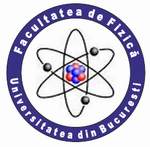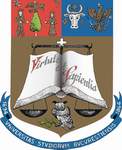| |
 |
UNIVERSITY OF BUCHAREST
FACULTY OF PHYSICS Guest
2025-10-05 22:39 |
 |
|
|
|
Conference: Bucharest University Faculty of Physics 2025 Meeting
Section: Solid State Physics and Materials Science
Title:
Searching for new radiocarbon dating of bones pre-screening criteria.
An adaptation for Romanian archaeological materials
Authors:
Oana Daniela CALANCEA(1,2), Corina Anca SIMION(1), Mihaela ENACHESCU(1), Cristian MANAILESCU(1), Adina BORONEANȚ(2)
*
Affiliation:
1 Horia Hulubei National Institute for Research-Development in Physics and Nuclear Engineering, 30 Reactorului St, P.O. Box MG 6, 077125, Magurele-Ilfov, Romania
2 Vasile Parvan Institute of Archaeology, 11 Henri Coanda St, 010667, Bucharest, Romania
E-mail
calancea.od.nipne@gmail.com
Keywords:
osteoarchaeology, radiocarbon dating, statistical analysis of data, pre-screening methods, diagenesis processes
Abstract:
Type II collagen from bones represents a material with great informational contribution in archaeology. The living protein differs from the protein extracted from bones immediately after death, but also from that extracted from bones that have undergone various diagenesis processes in the post-depositional stage. Radiocarbon dating of osteological material is focused on this last type of protein. Since 1949 to the present days, the information tries to predict the chances of extracting reliable collagen, datable by radiocarbon method. An important landmark was provided by the Oxford Radiocarbon Accelerator Unit, UK (ORAU) in 2010, by publishing an overview article on the pre-screening techniques for osteological material, in order to choose suitable samples for this type of analysis. The most reliable and more easily accessible method proved to be elemental analysis that establishes the mass percentages %C, %N, as well as the atomic ratio C:N. If the raw bone powder falls within the ranges established during these studies, then there is a maximum 85% chance of obtaining, through ORAU methods, over 1% overall yield or/and a minimum of 10 mg of EDAM (Extracted Damaged Archaeological Material) – formally associated with protein residues larger than 30 kDa. These ranges were defined by analyzing correlation factors and establishing linear regression equations. Given the environmental conditions of Romania, a maximum of only 40% of the datable bones statistically fall within the recommended ranges of these three parameters. By adapting IFIN-HH and other pre-treatment methods worldwide to the RoAMS laboratory, the chances of extraction increased sometimes to near 100%, even for specimens that should have been rejected by ORAU criteria. The paper presents a comparative statistical analysis of pre-screening data and of collagen amount/overall yield, for several pretreatment methods. Principal Component Analysis and Cluster Observations are used, establishing additional criteria and new regression equations.
References:
[1] Brock et al. 2010, Current pretreatment methods for AMS radiocarbon dating at the Oxford Radiocarbon Accelerator Unit (ORAU), Radiocarbon, Vol. 52(1), pp. 103–112.
[2] Brock et al. 2010, Pre-screening techniques for identification of samples suitable for radiocarbon
dating of poorly preserved bones, Journal of Archaeological Science , Vol. 37, pp. 855–865.
[3] Maspero et al. 2011, A new procedure for extraction of collagen from modern and archaeological bones for 14C dating, Analytical and Bioanalytical Chemistry, Vol. 401, pp. 2019–2023.
[4] Tuross, 2012, Comparative decalcification methods, radiocarbon dates, and stable isotopes of the VIRI bones, Proceedings of the 6th International Radiocarbon and Archaeology Symposium, edited by E Boaretto and N R Rebollo Franco, Radiocarbon, Vol. 54(3–4), pp. 837–844.
[5] Olsen et al. 2013, ‘Old wood’ effect in radiocarbon dating of prehistoric cremated bones? Journal of Archaeological Science, Vol. 40, pp.30-34.
[6] Sava et al. 2019, Status Report on the Sample Preparation Laboratory for Radiocarbon Dating at the New Bucharest RoAMS Center, Radiocarbon, Vol. 61(2), pp. 649-658.
Acknowledgement:
The radiocarbon dating was carried out within the NUCLEU project, project PN 23210201 and PN 23210102, financed by the Ministry of Research, Innovation and Digitization Romania. The experiments were carried out at Tandetron™ 1MV accelerator from Horia Hulubei National Institute for R&D in Physics and Nuclear Engineering (IFIN-HH), and were supported by the Romanian Government Program through National Program for Infrastructure of National Interest (IOSIN funds).
|
|
|
|

